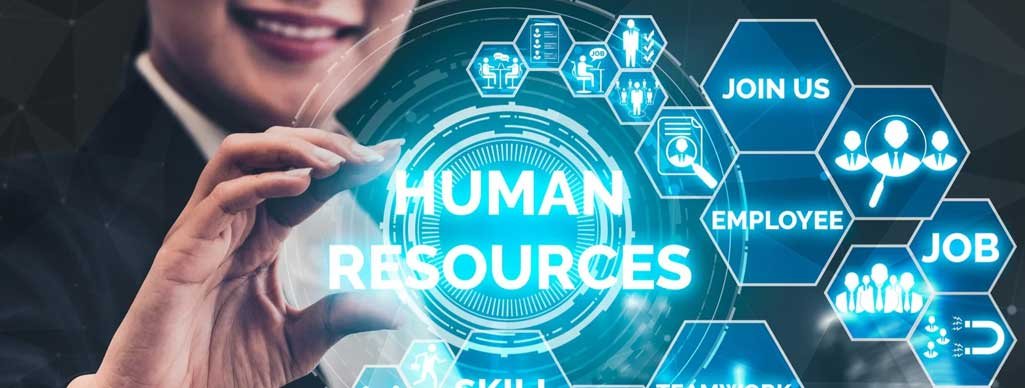
Soumya Srivastava, IOCL
srivastavas1@indianoil.in

Abstract
For all the things we have to learn before we can do them, we learn by doing them” – Aristotle

This quote captures the essence of gamification as learning by doing is the best way to learn new things.
Some people are said to be born leaders.
Some people gravitate naturally to leadership positions in a quest for control or power.
Some people rise through the ranks.
The definition of a leader, according to the Merriam-Webster dictionary, is straightforward: ‘A person who has commanding authority and influence’. The Business Dictionary is more specific, it includes establishing and realising a clear vision, coordinating conflicting interests and thinking and acting creatively in difficult situations.
At every level of leadership—from the top management to middle management to team managers —dealing with people is an important skill to develop. If not dealt with caution, it can create compounding issues and a complex situation that disrupts the organization overall.
It is simply not true that accepting a position of leadership automatically endows the skills necessary to manage complex people situations. Today’s organizations call for a new kind of leader, one who is willing to reach out and be proactive and address disruptions in a way that not only solves the initial problem(s) but also takes the organization to new heights.
Today acquiring knowledge and skills is equally important as applying those skills in practical. Nowhere we are testing the leaders by simulating such
situations for budding leaders and examining their reactions. This is where gamification comes into role.
Gamification is defined as taking the essence of games—attributes such as engagement, transparency, design, and competition—and applying them to a range of real-world processes inside an organization – leadership development.
Main Content
Traditional leadership training has many shortcomings. Many leadership development efforts fail. While there are many reasons for this, the format of the training that participants receive is often key.
Traditional leadership training is falling short in providing an environment in which people can truly change behaviours. Too often, participants leave training programs with little insight into their leadership style, their strengths and weaknesses, or concrete ways to apply what they have learned in their daily lives.
Lack of leadership readiness can result in two significant costs to organizations:
1. Financial performance: Perceived strength of leadership can have tremendous financial implications
2. Employees experiences: Trust in leadership and perception of a leader’s ability greatly influences employee’s own level of engagement and satisfaction.
A recent study revealed that management learning programs that use simulations provide significantly improved leadership competencies compared to those that use traditional learning methods.
Studies suggest that leadership development is best acquired through experience and reflection, yet many traditional leadership training programs are unable to deliver this type of learning opportunity.
Gamification Idea
The key question for considering the strategy, is how gamification evolves from a fun way to engage employees to a tool driving higher levels of business performance and employee engagement?
Addressing the latter is more important than ever these days, with surveys like Gallup’s reporting that employee engagement levels are once again below 30 percent, with that number even lower for staff in the Boomer generation, despite those employees often being the ones in leadership positions. It is no
wonder companies are finally focusing on how re-imagining leadership development can be part of the solution.
In gamification, it’s especially critical to determine the desired behaviour change or other results we want leaders to demonstrate. If we don’t, the learners are just playing a game.
Awareness and Courage: The Mark of a True Leader
First we need to identify the behavior results required in our organization by putting leadership competency model in place to be created through interviews, focus groups and/or surveys. This model should have demonstrable, organization-specific examples of each competency in addition to the underlying knowledge, skills, and behaviors that leaders need to demonstrate this competency. These examples should come from real-life situations and be observable interactions with team members, peers, or customers.
We can then put these examples into a rubric with discernible, concrete levels of progressive performance. The rubric should contain good definitions and evaluative criteria at each level, and you can use it to link levels of achievement when connecting game elements to behavior change.
The factors to keep in mind:
Think Strategy First: Identify and articulate what the business objectives are and what measures progress towards a desired business outcome. A focus on analytics will help to determine whether a game is successful or not, and how it can be modified for changing business objectives.
It is important to create the right environment for a game to succeed. This includes understanding the demographics and behaviour patterns of the gamers, as well as putting into place the right extrinsic and intrinsic rewards.
Use design thinking: To be successful, a game must be contextual and relevant for the community. It must have the right visual and sensory appeal, as well as a relevant storyline. This requires designing the game with a strong behavioural mindset. It is important to understand what motivates the employees and clients and how to design a game that fits well within the culture of the organization.
Technology

A digital twin is a virtual model designed to accurately reflect a physical object. The object being studied — for example, a wind turbine — is outfitted with various sensors related to vital areas of functionality. These sensors produce data about different aspects of the physical object’s performance, such as energy output, temperature, weather conditions and more. This data is then relayed to a processing system and applied to the digital copy.
Once informed with such data, the virtual model can be used to run simulations, study performance issues, and generate possible improvements, all with the goal of generating valuable insights — which can then be applied back to the original physical object.
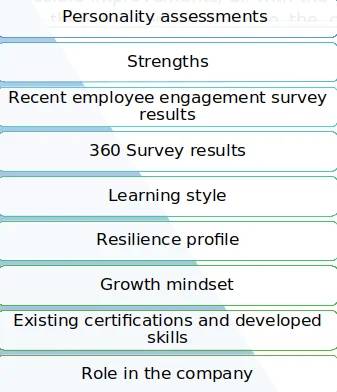
With a digital twin model of leadership following benefits can be:
Receive hyper-personalized nudges based on your unique digital twin
Receive tips and training on how best to communicate with your manager, your peers, your direct reports (based on everyone’s digital twin)
Receive advice on how to individualize your leadership based on the digital twins on your team
Receive career path recommendations that better suit your strengths, personality, and experience
The company could receive forecasts of increased turnover in certain business units
The company could identify personality profiles that statistically correlate to higher performance
Digital Twins and Privacy
Employees are already completing behavioral assessments, 360-surveys, and various training programs. The key is to be totally transparent about how the data will be used, who will have access to it, and consider granting the option to opt-out.
The Future of Digital Twins for Leadership Development and Culture
As digital twin technology gains a foothold in leadership development and organizational culture, the applications and use cases will only continue to increase. Imagine optimize scheduling a learning and development conversation for the exact time of day when an individual is most receptive to new information or simulate culture fit—how seamlessly a new hire would “mesh” with existing team members based on personality and workstyle before sending an offer letter. Or being able to digitally “map” the culture to see what skills, competencies, and personality types the organization lacks.
Gamification in Leadership Development: Companies using Gaming to Build Their Leader Pipeline
NTT Data: Ignite Leadership Game.
Ignite Leadership’s Metrics
Deloitte: A Leadership Academy with Games as Lessons.
Metrics for Deloitte Leadership Academy
A total of 70 leaders have completed NTT’s gamified training program:
50 employees ended up taking on team leadership roles, which was 50% higher
Newly developed leaders proposed 30 new ideas to assist in current projects, as part of the “Smart Idea Challenge.”
This generated $1 million in revenue, as well as cost savings for current clients
Finally, “graduates” of the Ignite Leadership Game together have generated 220 new ideas in the customer organizations
Led to a 40 % increase in employee satisfaction and helped to lower attrition by 30 %
Idea

Gamification will use the concept of digital twin technology
By utilizing the idea of gamification to provide leaders about a role they aspire to within the organization. The players can collaborate with each other, get instant feedback from peers, and be recognized for their game play, all while becoming more visible to the organization as potential leaders.
Leadership itself needs to be clearly defined in the context of the organization
Appropriate tools for self-awareness and insight need to precede the training
The simulation experiences need to be carefully engineered
The experience needs to be cemented with adequate follow-up and coaching
Only when a fun, challenging, and meaningful environment for all participants is established and decision points are carefully scripted and debriefed will learning occur. Effective simulation design can lead to successful experiential learning and creative exploration that inspires learners, revitalizes them, and equips them to change patterns of behaviour.
A gamer and a leader have many qualities in common

Key elements to include into the game:


Following are the features of the gamification proposed in Pipelines Division:
1. The game will include different scenarios a leader will likely encounter, such as handling difficult employee conversations, taking responsibility when work is achieved as desired or managing change and time.
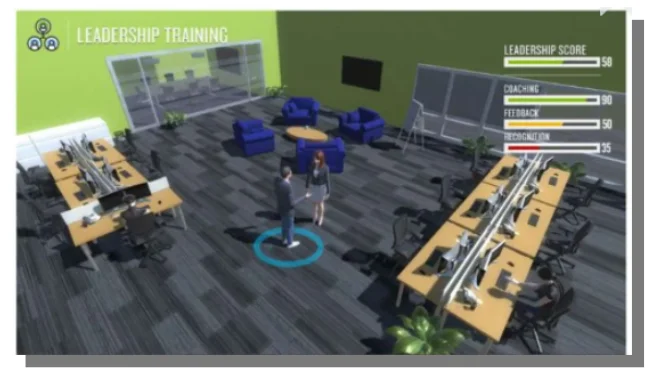
2. As leaders will progress, they will achieve immediate feedback and data points on the type of leadership style they often portray as well as how their leadership impacts work environment.
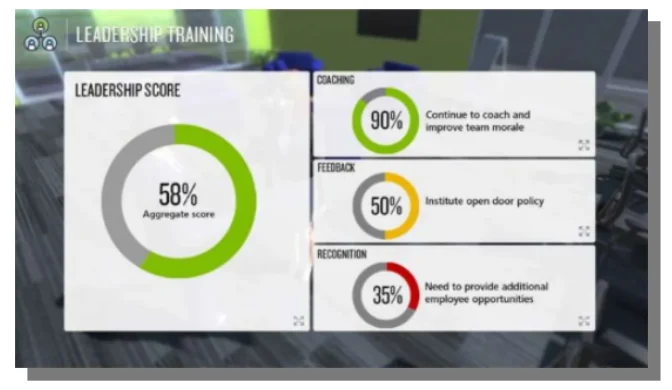
3. According to the performance of the leaders, difficulty will increase.
4. Feedback for overall development of leaders.
5. It will allow leaders to discover their own unique strengths and weaknesses by customising the game to their liking.
6. Game will allow learners to see their progress against set target.
The Leadership metrics are as follows:
1. What % of employees have taken more leadership roles after using gamification as leadership training vs those who followed traditional training methods.
2. What % of employees proposed more idea after using gamification as leadership training vs those who followed traditional training methods.
Survey
A survey was created to study across upcoming leaders in Pipelines Division to understand the mindset and acceptance towards introduction of gamification via digital twin.
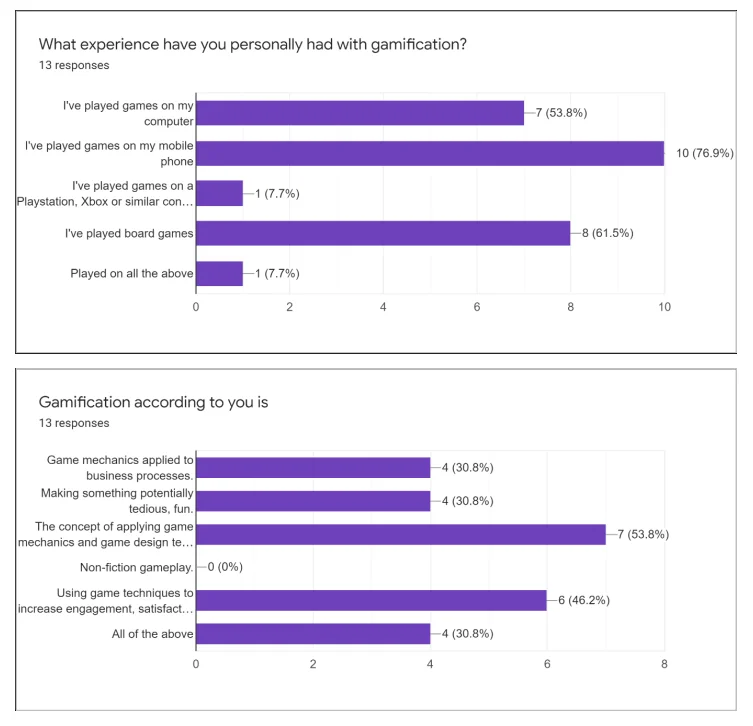
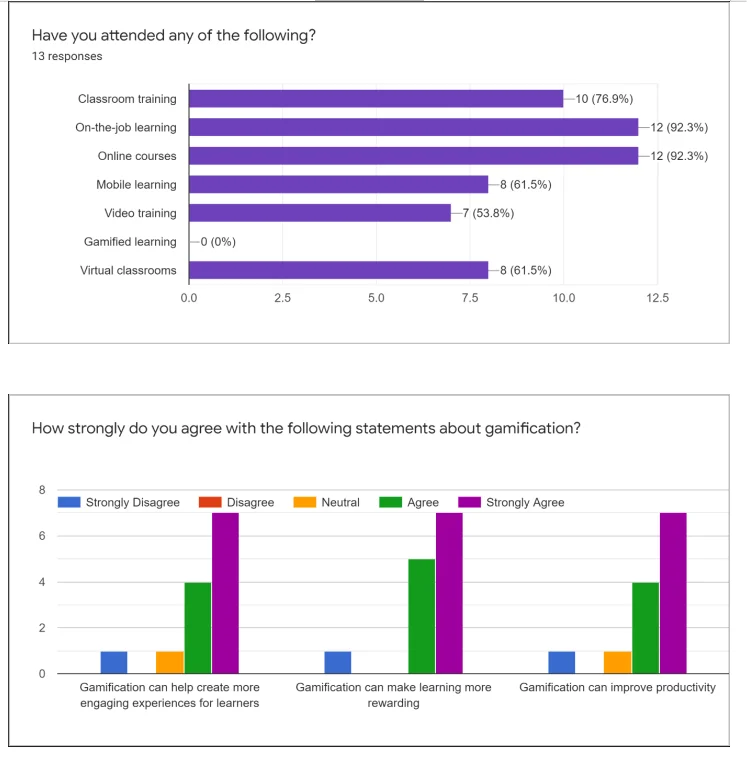
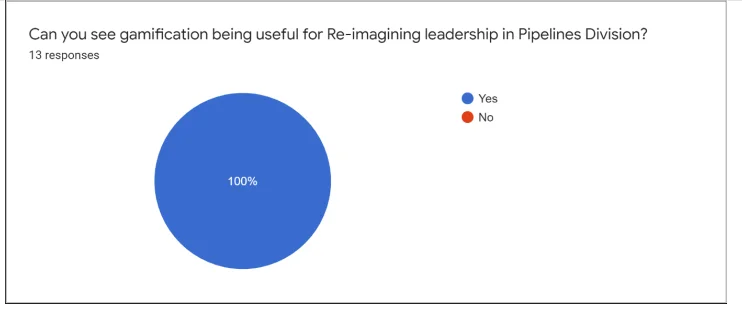
It was observed that out of 13 responses we received:
84.6% of the responses believes that gamification can create more engaging experiences for learners and can improve productivity
92.3% of the responses believes that gamification can make learning more rewarding
100% of the response thinks gamifications can be useful for Re-imagining leadership in Pipelines Division
We can conclude that Indian Oil can take the lead by introducing Leadership Management through gamification using digital twin model.
Conclusion
In the current technology-led era, more and more businesses are choosing innovative methods for training to close the talent gap that is undermining global competitiveness and to excite a generation of new leaders. Companies are beginning to understand that leadership training needs to go beyond motivational speeches and lectures and move toward meaningful experiential learning. Starting with a clear definition of leadership within the organization, employers are now developing focused programs that include relevant assessments, activities, reflection, and coaching, and —most importantly— immersive simulation experiences that allow participants to go through pivotal experiences that change behaviour.
Gamification will provide an environment that can prepare leaders for the unknown.
The organizations that learn how to harness digital twin technology for leadership development will have the ultimate competitive advantage: people who grow and develop at the speed of innovation.
References
1. https://hrtrendinstitute.com/2019/02/25/9-examples-of-gamification-in-hr/
2.https://www.computerworld.com/article/2485087/emerging-technology-case-study-3-heavyweights-give-gamification-a-go.html#NTT
3.https://www.forbes.com/sites/jeannemeister/2013/09/30/gamification-in-leadership-development-how-companies-use-gaming-to-build-their-leader-pipeline/?sh=43dbc95b5a57
4.https://www.slideshare.net/manumelwin/gamification-and-leadership-development-manu-melwin-joy
Posted in HR Technology | No Comments »
Recent Articles
- The Communication Network: Public Relations in the Digital Era
- HR Analytics – Enabler for Strategic Business Partnership
- Machine Learning applications in the domain of HR Analytics
- Pandemic provided the tailwind to HR technology sector
- Gamification using Digital Twin for Leadership Management
- HR Tech-Options to evaluate
- Metaverse & Future Workplace
- Beat Burnout by investing in HR Technology and Automation
- How to Harness the Power of AI in HRM
- Driving innovation & Experimentation through Digital HR Transformation & Building Employee Experience
- HR Tech Trends
- Decoding the ‘Digital Personal Data Protection Bill 2022’
